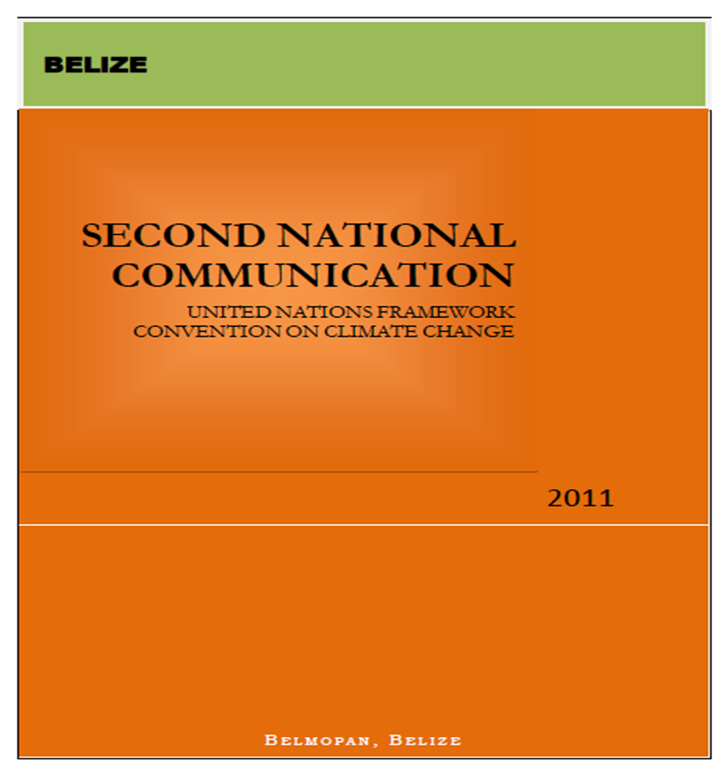Belize's Second National Communication (2011)
Project Overview
The creation of a National Communication offers countries the opportunity to contribute with technically sound studies and information that can be used for designing mitigation and adaptation measures, and project proposals that can and will help increase their resilience to the impacts of climate change. Activities generally include: V&A assessments, Greenhouse Gas Inventory preparation, Mitigation Analysis or Education, and awareness raising activities.The ultimate goal is the integration of climate change considerations into relevant social, economic and environmental policies and actions.
Key Vulnerabilities identified in Belize's Second National Communication (2011):
- Agriculture/Food Security
- Coastal Zones and Marine Ecosystems
- Public Health
- Tourism
- Water Resources
Project Details
Potential Adaptation Measures Identified in Belize's Second National Plan (2011):
Agriculture/Food Security
- Managing river basins for more efficient delivery of irrigation services and prevent water logging, erosion and nutrient leaching; making wider use of technologies to “harvest” water and conserve soil moisture; use and transport water more effectively.
- Making wider use of integrated pest and pathogen management, developing and using varieties and species resistant to pests and diseases; improving quarantine capabilities and monitoring programmes.
- Increasing use of climate forecasting to reduce production risk.
- Introducing forest conservation, agro-forestry and forest-based enterprises for diversification of rural incomes
Coastal Zones and Marine Ecosystems
- Reintroduce a periodic forum to address the issues surrounding the state of the Coastal Zone.
- Develop an incentive programme that encourages the private sector to actively participate in adaptation to climate change.
- Revise and streamline the current legislations and policies that relate to the management of the coastal zone to eliminate overlaps and close existing gaps.
- Develop strategies to increase compliance particularly with regard to coastal development.
- Develop a Public Awareness and Education Strategy.
- Consolidate and Strengthen the MPA system.
- Expand and Streamline the Ecosystem Monitoring Programme
Public Health
- Building design to increase airflow; trees for shade to combat increasing temperatures
- Sea wall defenses; mangrove restoration; beach nourishment; trees for protection agaist rising sea level.
- Storm-proof construction and reinforcement; trees for windbreaks against tropical storms
- Introduce marine protected areas; pollution control; coral regeneration
- Rainwater collection systems; water tanks
- Conservation; tourist education and awareness
Water resources
Measures to improve efficiency should be applied by the commercial water suppliers, in extraction from the sources, storage, and delivery to customers. This will be important in the context of reduced water availability occasioned by climate change
Key Results and Outputs
- Sustainable development and the integration of climate change concerns into medium- and long-term planning
- Inventories of anthropogenic emissions by sources and removals by sinks of greenhouse gases
- Measures contributing to addressing climate change
- Research and systematic observation
- Climate change impacts, adaptation measures and response strategies
- Education, training and public awarenes
Reports and Publications
Assessments and Background Documents
Monitoring and Evaluation
In 1992, countries joined an international treaty, the United Nations Framework Convention on Climate Change, to cooperatively consider what they could do to limit average global temperature increases and the resulting climate change, and to cope with whatever impacts were, by then, inevitable.
Parties to the Convention must submit national reports on implementation of the Convention to the Conference of the Parties (COP). The required contents of national communications and the timetable for their submission are different for Annex I and non-Annex I Parties. This is in accordance with the principle of "common but differentiated responsibilities" enshrined in the Convention.
The core elements of the national communications for both Annex I and non-Annex I Parties are information on emissions and removals of greenhouse gases (GHGs) and details of the activities a Party has undertaken to implement the Convention. National communications usually contain information on national circumstances, vulnerability assessment, financial resources and transfer of technology, and education, training and public awareness.
Since 1994, governments have invested significant time and resources in the preparation, collection and validation of data on GHG emissions, and the COP has made determined efforts to improve the quality and consistency of the data, which are ensured by established guidelines for reporting. Non-Annex I Parties receive financial and technical assistance in preparing their national communications, facilitated by the UNFCCC secretariat.




